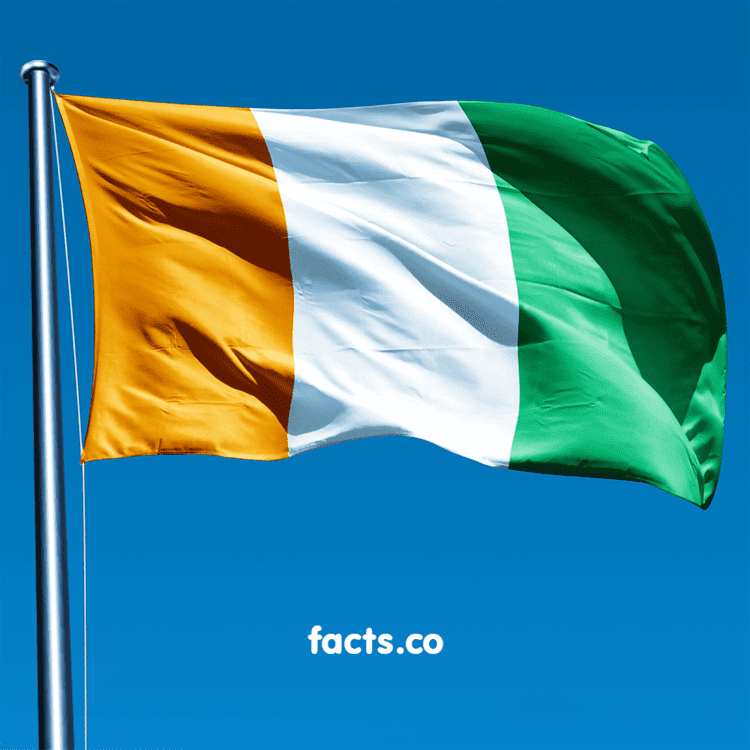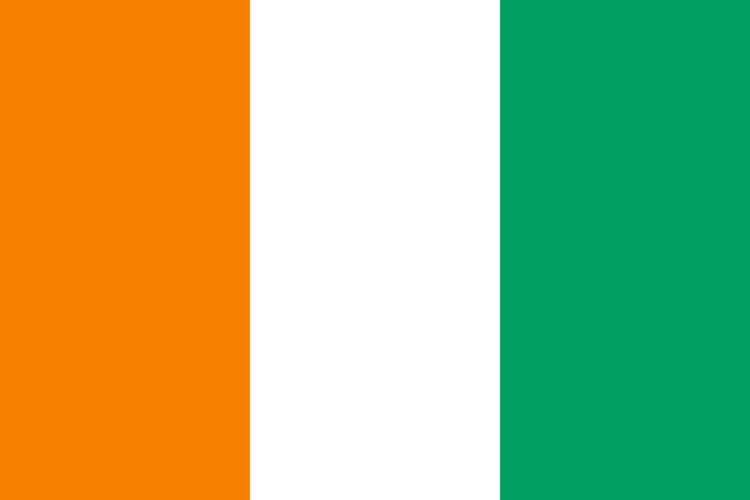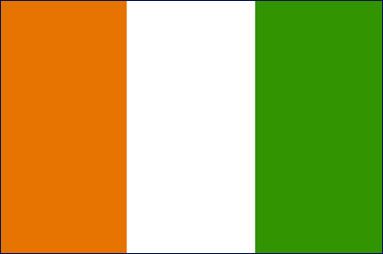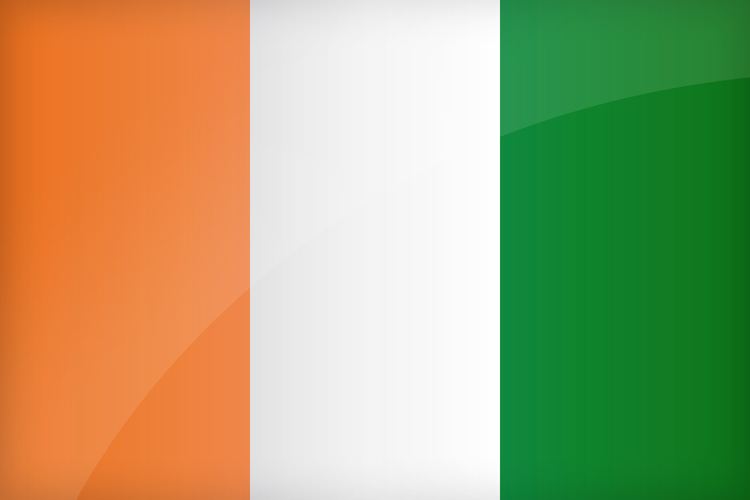Use National flag, Ensign Proportion 2:3 | Adopted on 3 December 1959 Country Côte d’Ivoire | |
 | ||
Design A vertical tricolour of orange, white, and green. | ||
The flag of Ivory Coast (French: Drapeau de la Côte d'Ivoire) features three equal vertical bands of orange (hoist side), white, and green.
Contents

Design and symbolism

After independence, the Ivory Coast formed a loose alliance of West African states. The flags of these states were influenced both by the Pan-African colours first used by Ghana, and also by the model of the French Tricolour, the flag of the former colonial power. The colours chosen for the Ivory Coast's flag were also used by Niger, with which the Ivory Coast had an alliance. They were intended to symbolise the following: the orange colour stands for the land, the savannah found in the northern part and its fertility, the white represents peace, and the green represents hope and also the forest of the southern part of the country. The flag was adopted on December 3, 1959 prior to the country's independence from France in 1960.
Adoption

The first and only flag of the Ivory Coast was adopted on December 3, 1959. The flag was designed following a referendum of the Fifth French Republic in 1958, which gave French colonies a choice to either remain with the crown or become independent. The Ivory Coast created its flag after voting to become an independent republic, and it was kept upon achieving full independence on August 7, 1960.

